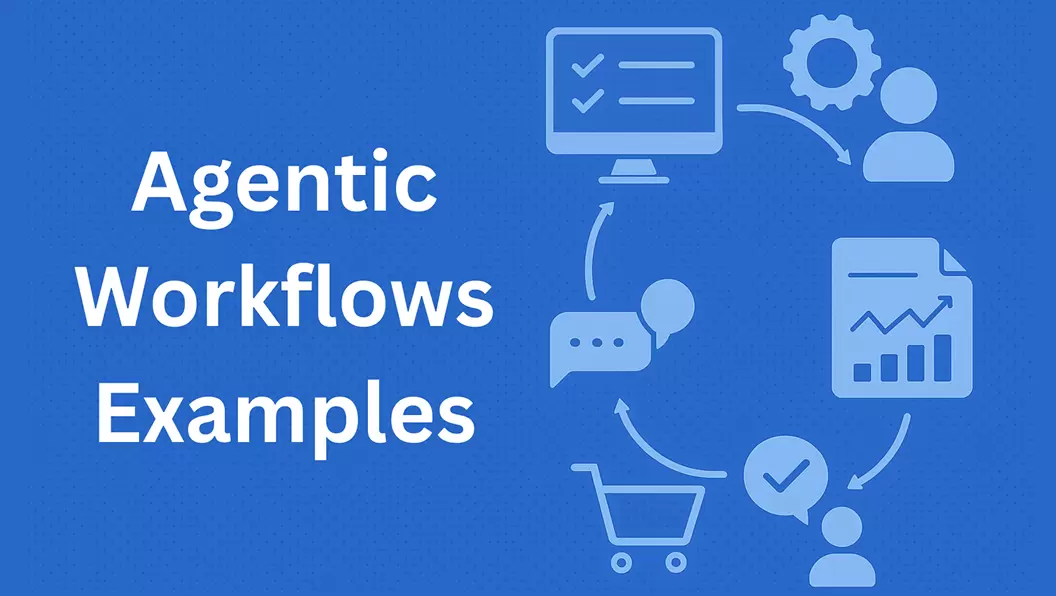Agentic RAG is an advanced RAG implementation that deploys AI agents to solve complex problems and extend the LLM's capabilities with AI decision-making.
Generative AI was once the next big thing in the tech world, but soon users found its limitations. It retrieves answers from vast datasets, which can sometimes make responses vague or incorrect, also called AI hallucination.
To tackle that, Retrieval-Augmented Generation (RAG) took the spotlight by grounding LLMs to up-to-date, external knowledge. At the same time, AI agents also became popular for tasks that required sequential decision-making and planning.
Now that the AI role in managing tasks is becoming more complex, relying on RAG or AI agents isn't enough. That's where Agentic RAG steps in.
Agentic RAG combines RAG's capabilities with AI agents' decision-making skills. In this guide, we will explore agentic RAG thoroughly, covering its working principles, use cases, challenges, and best practices.
What is Agentic RAG?
Agentic RAG is a system that combines Retrieval-Augmented Generation (RAG) and AI agents to create more adaptive and capable AI applications. Before we get deep into agentic RAG, let's first clarify these two technologies.
Retrieval-Augmented Generation (RAG) is a technique to build LLM-powered applications. It allows the LLM to access the external knowledge source to get relevant context and minimize hallucinations. Simply put, it enhances the accuracy and reliability of LLMs by providing information from relevant data sources.
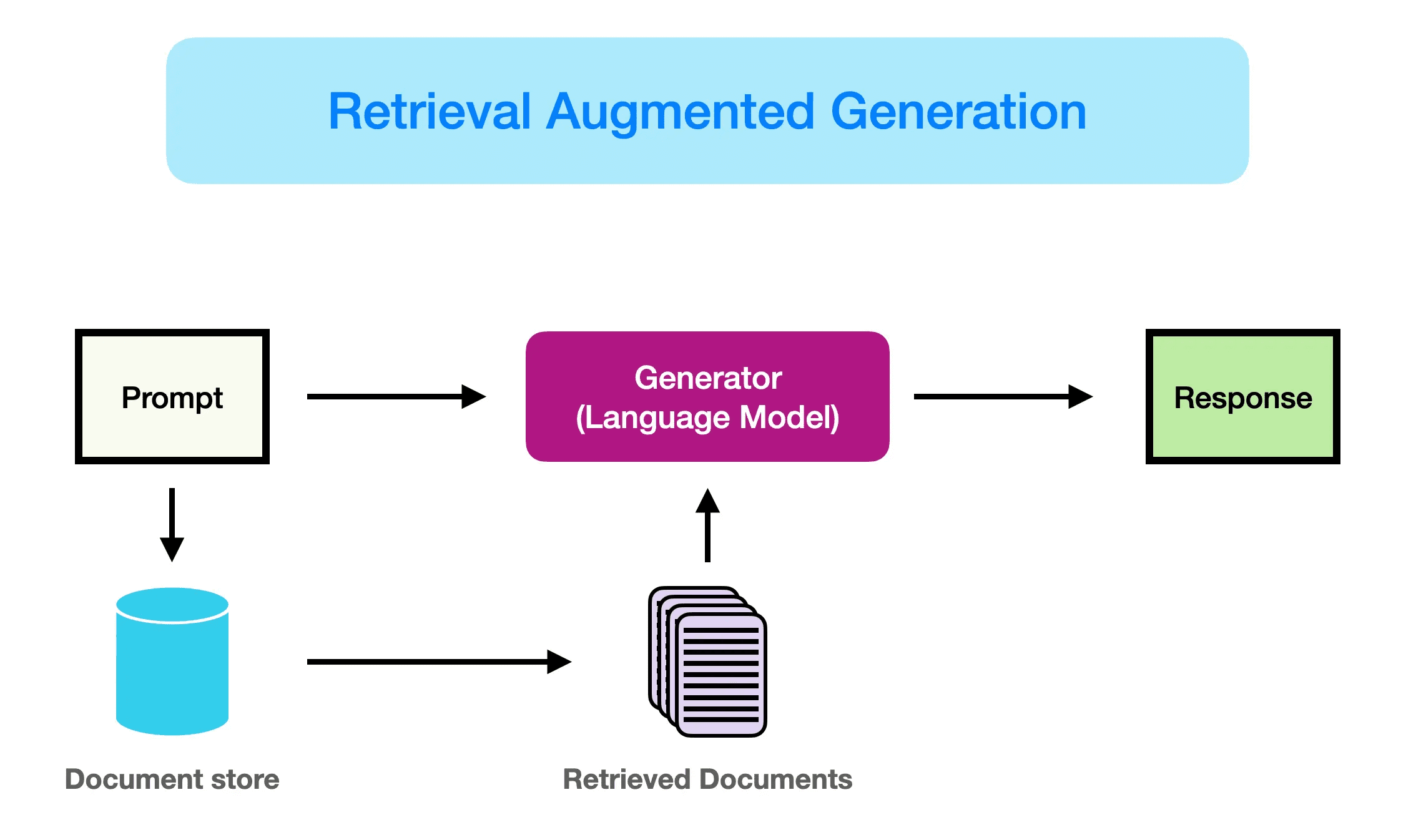
An AI agent is an autonomous system that has access to memory and external tools to perceive their environment, reason, and take actions. Agentic AI elevates the capabilities of AI agents further by integrating reasoning and planning. This turns agents to be proactive instead of reactive and handle more tasks autonomously. These agents become useful in tasks related to planning, decision-making, and interaction with complex workflows.
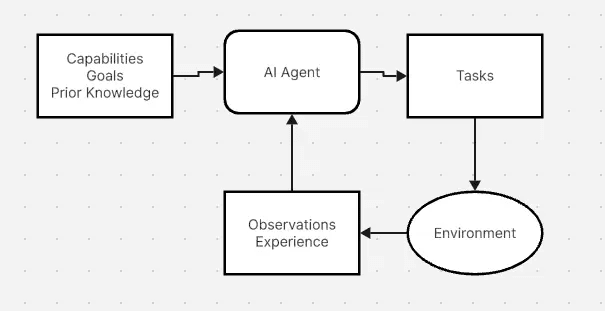
Agentic RAG integrates both technologies by embedding agentic agents into the RAG pipeline. This makes the system capable of handling multi-step task execution and dynamic decision-making. It makes the system well aware of what needs to be done and how to find the information it needs to perform the task.
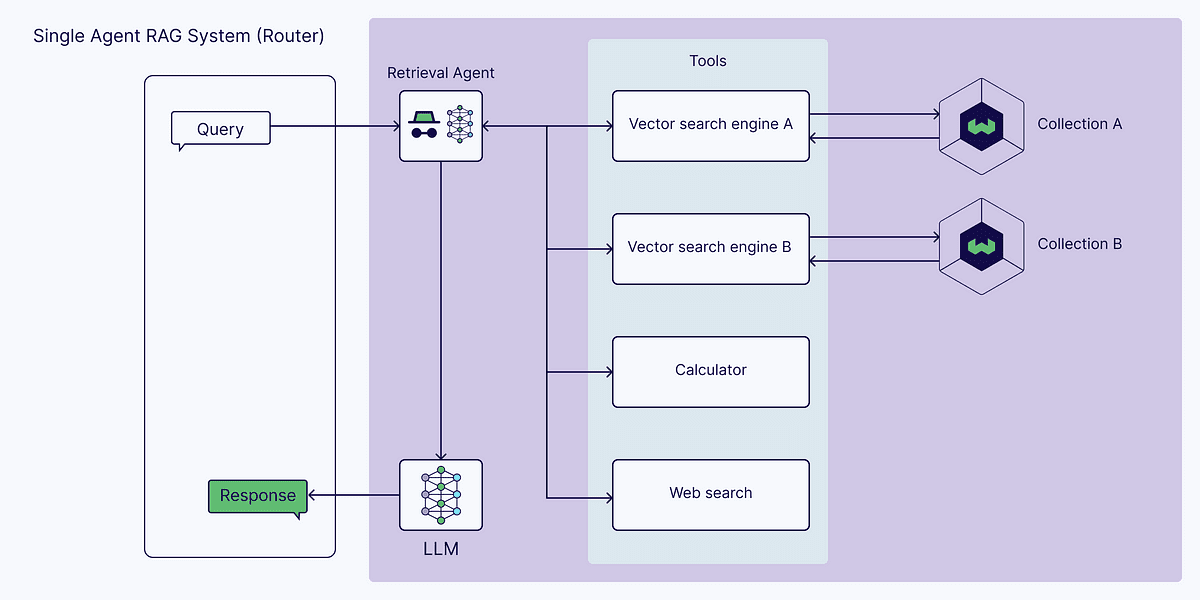
An example of agentic RAG is in healthcare diagnostics. A doctor inputs a patient's symptoms, and the system retrieves up-to-date medical research, suggests diagnoses, and proposes treatments. The system can even ask follow-up questions to refine its recommendations.
Standard RAG vs. Agentic RAG: Key Differences
Think of agentic RAG as the advancement to standard RAG that is more capable of facilitating complex workflows. Check out the comparison table of RAG vs agentic RAG to better understand the key differences:
|
Feature |
Standard RAG |
Agentic RAG |
|
Functionality |
Retrieves and generates responses based on static queries |
Incorporates autonomous decision-making and context-aware, multi-step workflows |
|
Query Processing |
Handles straightforward queries without breaking them into smaller components |
Decomposes complex queries into sub-tasks for more effective processing |
|
Response Accuracy |
Generates answers using static data retrieval |
Produces enriched responses by combining insights from various tools and data sources |
|
Context Awareness |
Limited understanding of context derived from retrieved documents |
Superiors contextual comprehension through external data integration and tool usage |
|
Performance Speed |
Slower due to linear query handling and processing |
Faster due to parallel execution and advanced orchestration techniques |
|
Handling Complexity |
Struggles with multi-faceted or layered queries |
Excels in solving complex queries using multi-step reasoning and dynamic workflows |
|
Learning Capability |
Offers minimal system improvement via feedback loops |
Continuously evolves by incorporating iterative feedback and adaptive learning mechanisms |
|
Tool Utilization |
Restricted to retrieving information from static sources like documents |
Integrates APIs and external tools for richer and more actionable insights |
In short, RAG is useful for basic Q&A and research, while agentic RAG dominates in complex and data-intensive applications.
How does Agentic RAG work?
Agentic RAG has four pillars, i.e., autonomy, data retrieval, augmented generation, and feedback loop. The details of these pillars are as follows:
Autonomy in Decision-Making
Agentic RAG don't need explicit instructions to know what is required to complete a task. Even if it has got an incomplete question or dataset, it can intelligently determine the missing elements and find them. Sometimes, it can even go for iterative querying. This approach makes it effective as a proactive problem-solver.
Retrieval of Relevant Information
Agentic RAG accesses real-time data using advanced tools, such as databases, APIs, and knowledge graphs. It extracts up-to-date information instead of just static, pre-trained knowledge. For example, it can pull the latest research insights, current market trends, and other information.
Contextual Accurate Responses with Augmented Generation
After data retrieval, agentic RAG LangChain processes and integrates the data into a coherent response using LLMs. It ensures that responses are context-aware, meaningful, and accurate.
Feedback Loop for Continuous Learning
Lastly, agentic RAG has a feedback loop in place to refine its responses over time. Every interaction with the system makes it smarter and more intelligent, which drives long-term performance enhancement.
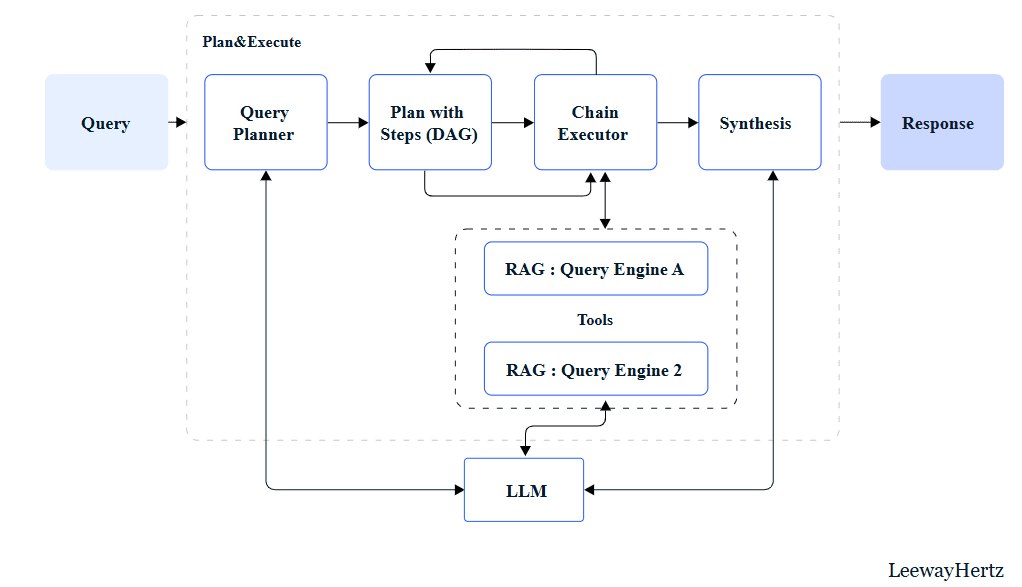
Workflow of Agentic RAG
All the above pillars of agentic RAG work together as a single unit for data retrieval, augmentation, and generation. Let's now take a look at what a typical workflow of LangChain agentic RAG looks like:
- Prompt: The user specifies a query to the system.
- AI Agent: Breaks down the query, determines missing context through iterative querying, and autonomously selects tools (APIs or databases) to retrieve relevant data.
- Knowledge Base: Pulls structured (databases), unstructured (research papers), or real-time data (APIs/news feeds).
- LLM: Synthesizes retrieved data into a contextual response.
- Feedback Loop: Refines future outputs by learning from user interactions.
In this way, a typical agentic RAG system uses different components to handle simple to complex workflows with greater knowledge and automation.
Real-World Use Cases and Benefits of Agentic RAG for Enterprises
Agentic RAG has a diverse range of applications. It is already in action across different enterprises and industries.
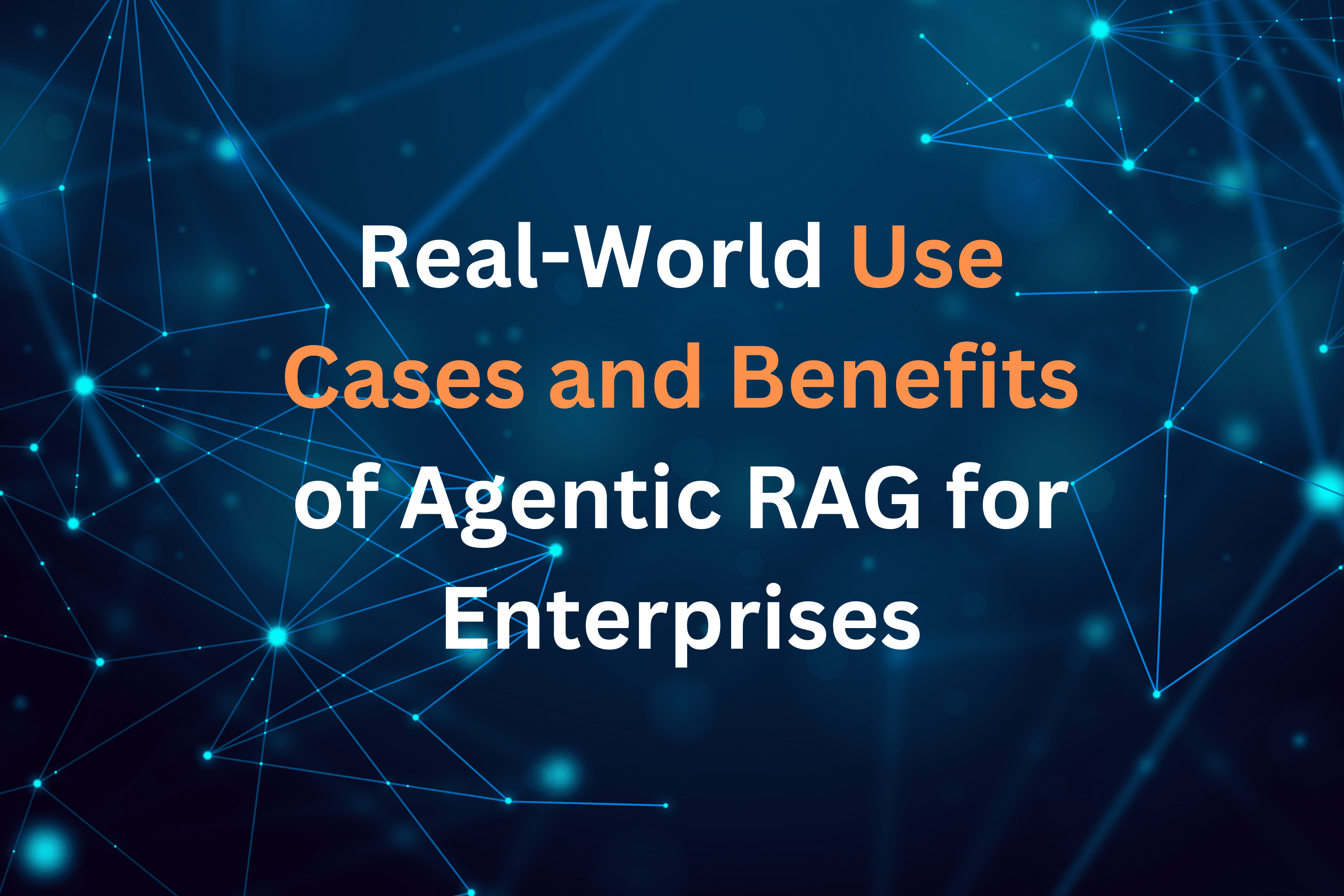
Some of the common applications of agentic RAG include:
- Customer Support: Agentic RAG empowers support systems to adapt responses to individual customer contexts. For example, it can resolve order delays by offering real-time solutions like expedited shipping or discounts. Plus, these systems refine their interactions over time by learning from historical data.
- Healthcare: Clinicians use agentic RAG to synthesize the latest medical research into evidence-based recommendations. This improves diagnostic precision and treatment plans. Plus, the technology also enhances patient safety by flagging drug interactions and supports medical training with instant access to evolving clinical guidelines.
- Education: Intelligent tutoring systems use agentic RAG to personalize learning paths by retrieving content aligned with a student's progress and preferred learning style.
- Business Intelligence: Enterprises automate KPI analysis and report generation with agentic RAG. The system identifies hidden trends in data and facilitates proactive decision-making to outpace competitors.
- Scientific Research: Researchers are using agentic RAG to identify relevant studies and extract key insights. This approach reduces the time spent on literature reviews.
In short, agentic RAG can facilitate different departments and industries with its intelligent reasoning and context-aware decision-making. Below are three real-world use cases of Agentic RAG:
Microsoft Copilot
Microsoft Copilot AI assistant is using an agentic RAG solution to optimize its use. Instead of using pre-trained responses, it retrieves the latest information from Microsoft's documentation and user forums. This leads to contextual and precise assistance to the customer and an increase in first-time resolution rate.
BloombergGPT
BloombergGPT is a 50 billion LLM for finance. It is integrated with agentic RAG to fetch real-time financial data, expert analysis, and market trends. It provides users with assistance in getting the most current information for effective investment decisions.
Salesforce Agentforce
Salesforce Agentforce is a platform for organizations to build and manage autonomous agents to handle various tasks. It is powered by agentic architecture, which makes autonomous agents more capable of retrieving data in real-time and making decisions.
Benefits of Agentic RAG for Enterprises
The main benefit of agentic RAG lies in the improved data retrieval quality. With AI agents accessing tools to retrieve additional information, it leads to more accurate, contextual responses. In addition, the agent's reasoning capabilities provide an additional validation of the retrieved context.
The key benefits of agentic RAG for enterprises include:
- More accurate and contextual responses.
- Automates workflows and enhances productivity.
- Delivers personalized information based on user context and preferences.
- Real-time updates and insights are required by users for decision-making.
- Improving responses over time with feedback-based continuous learning.
Simply put, agentic RAG is an intelligent system that integrates AI agents with advanced data retrieval and generation capabilities.
GPTBots.ai Enterprise AI Agent: Powered by Agentic RAG
Knowing what is agentic RAG is one thing, but the next crucial question is how organizations can utilize agentic RAG. That's where GPTBots.ai steps in.
GPTBots.ai is a leading platform for building enterprise-grade AI agents leveraging agentic RAG. It helps enterprises build intelligent AI agents for customer service, data insights, enterprise search, marketing, and more.

Basically, GPTBots.ai creates AI agents that have both capabilities, i.e., the intelligence of large language models (LLMs) and the knowledge of enterprise exclusive knowledge base. This makes them not only adept at understanding and generating human-like language but also capable of navigating the unique datasets and operational environments of each organization.
Here's how GPTBots.ai integrates agentic RAG to deliver superior autonomous agent capabilities:
- Intelligent, Context-Aware Responses: AI agents can understand complex queries and provide context-aware responses that are relevant and actionable.
- Autonomous Decision-Making and Iterative Problem-Solving: With the predictive power of LLM and the accessible enterprise knowledge base, AI agents can make decisions autonomously and solve problems iteratively.
- Seamless Integration with Existing Enterprise Systems: AI agents can integrate with existing enterprise systems, including CRM platforms, data warehouses, or communication tools. This leads to a unified digital ecosystem for enhanced operational efficiency and streamlined workflows.
Why you should consider GPTBots.ai to build agentic RAG-powered AI agents is evident from its key highlights:
- Easy deployment and scalability of AI agents.
- Customizable workflows tailored to enterprise needs with expert support.
- Ultra-customizable no-code automation to easily design, test, and deploy AI agents across departments.
Overall, GPTBots.ai is your all-in-one platform to build a diverse range of AI agents backed with agentic RAG for thorough reasoning, automation, and operational efficiency.
Challenges and Best Practices for Adopting Agentic RAG
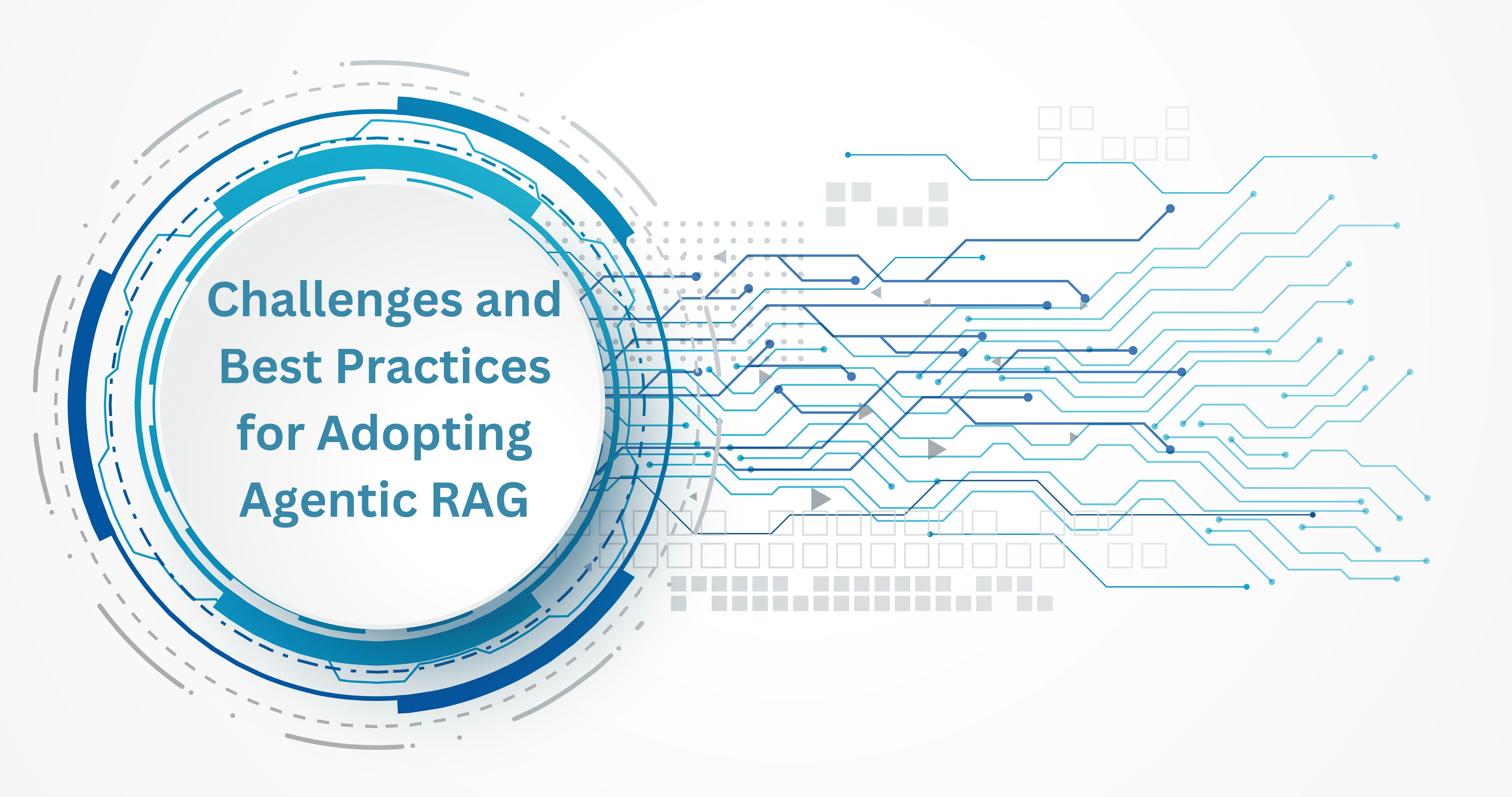
Agentic RAG adoption also brings a few challenges, as follows:
- Data Relevance and Quality: Ensuring that the retrieved data is relevant and high-quality.
- Integration Complications: Challenges in balancing the interaction among AI agents, data retrieval systems, and generative LLMs.
- Bias Mitigation: Ensuring that both the training datasets and the retrieved content avoid biases requires careful attention.
- Operational Scalability: Maintaining real-time operations on a large scale poses scalability hurdles.
Best Practices for Agentic RAG
Although there are challenges in adopting agentic RAG, a few best practices can be really handy. Try out the below three best practices to optimize your agentic RAG adoption:
- Data Preparation and Quality Assurance: The data used for training and retrieval should be relevant, accurate, and free from biases.
- Choose the Right Tools and Frameworks: Choose the best tools and frameworks that truly provide the agentic experience. LangChain and GPTBots.ai are two leading platforms for creating AI agents leveraging agentic RAG.
- Continuous Monitoring and Optimization Strategies: Monitor the system performance and implement feedback loops to refine outputs and adapt to changing requirements.
Conclusion
AI is progressing rapidly with new emerging methods for knowledge sharing, reasoning, information representation, and decision-making. Agentic RAG has now empowered enterprises to create more adaptive AI applications by combining the autonomy of agentic AI and dynamic data retrieval of RAG. Therefore, it is essential for organizations to integrate agentic RAG using tools like GPTBots.ai and optimize their operations with AI and minimal human intervention.
Start Your Free Demo


